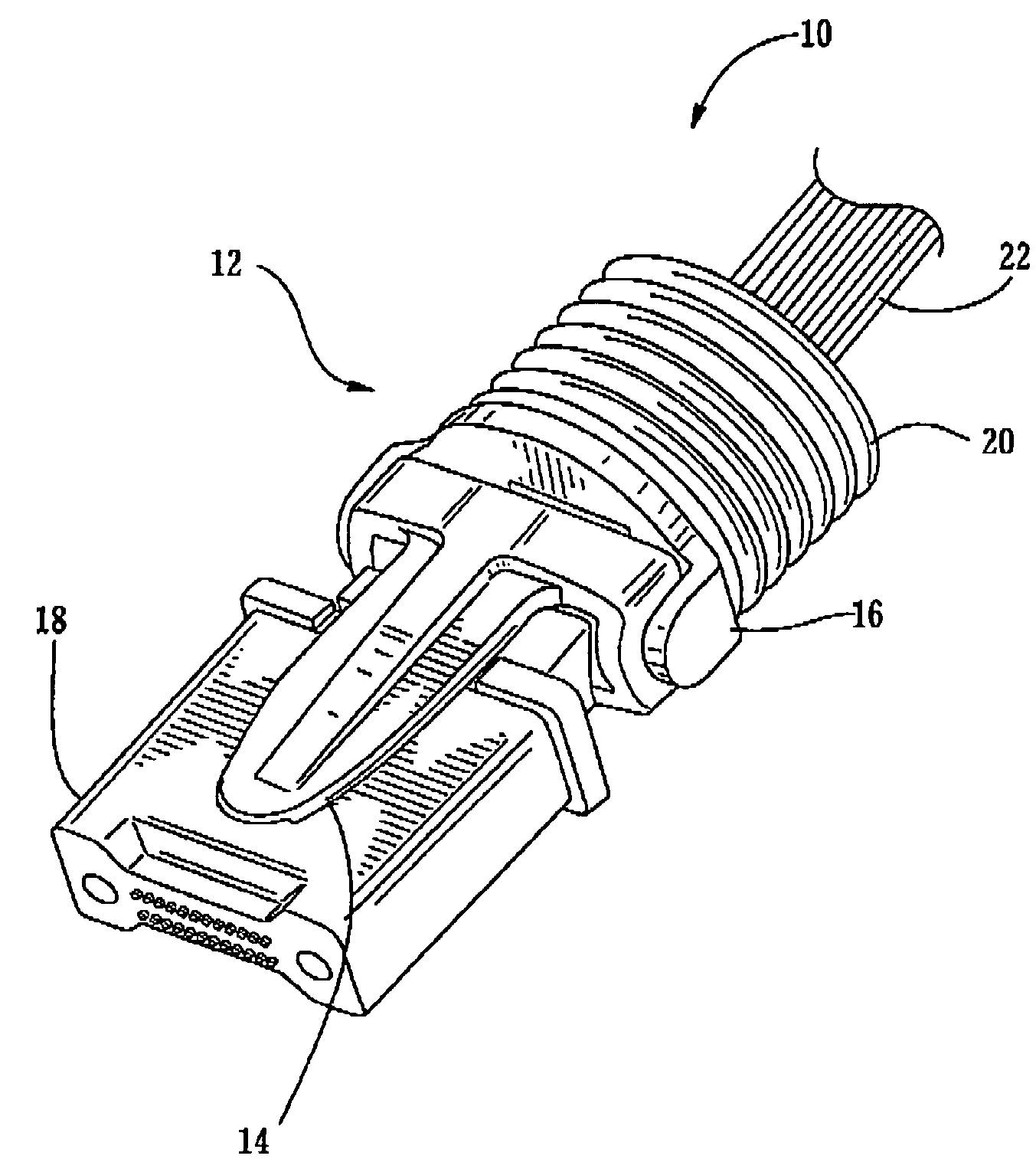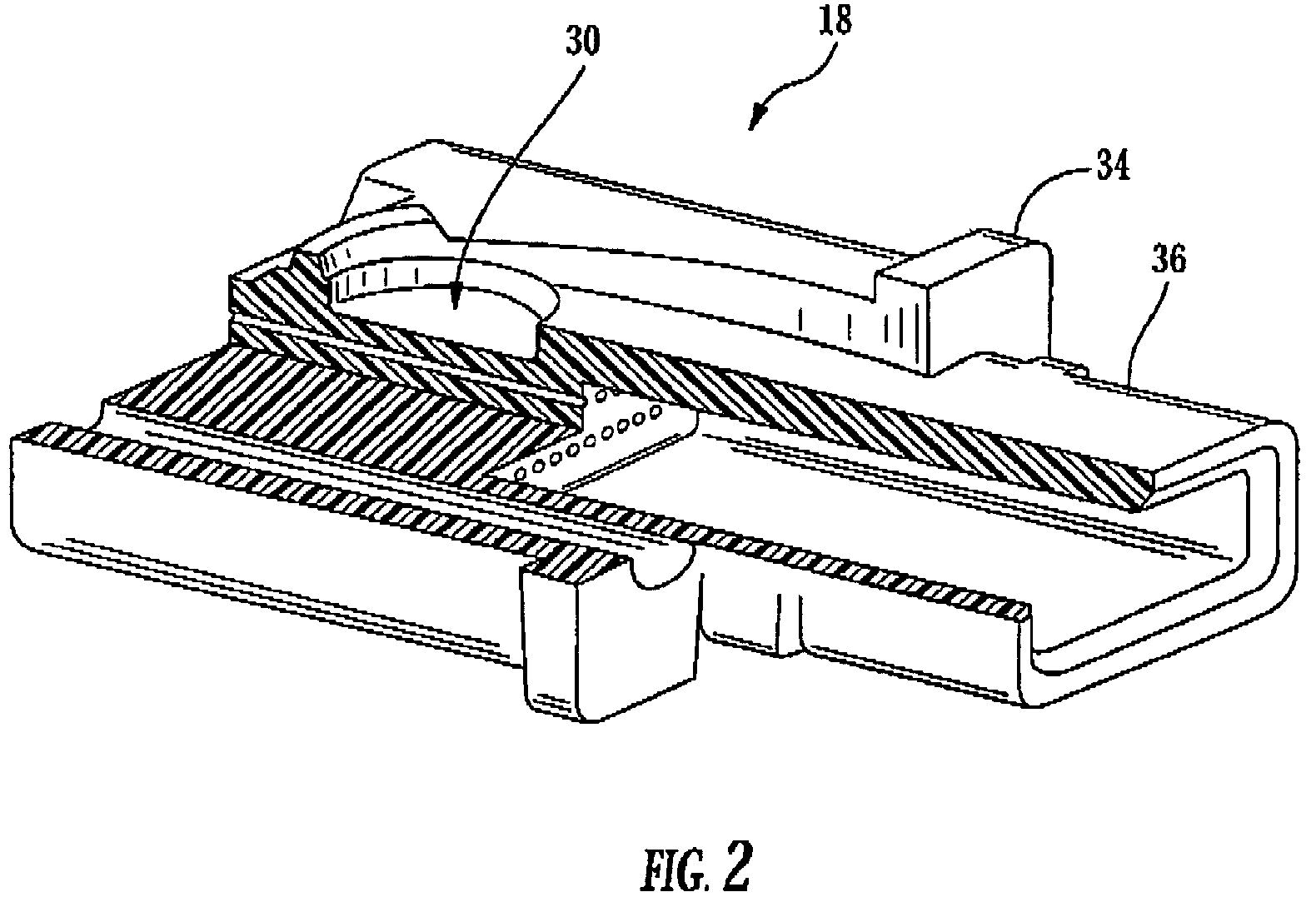Articulated force application for multi-fiber ferrules
a multi-fiber ferrule, articulating force technology, applied in the direction of optics, instruments, optical light guides, etc., can solve the problems of optical fibers losing contact, improper epoxy containment, biased alignment, or both, and adjoining ferrules tilting under load, so as to reduce the side-load component, minimize the side-load component, and facilitate optical fiber insertion
- Summary
- Abstract
- Description
- Claims
- Application Information
AI Technical Summary
Benefits of technology
Problems solved by technology
Method used
Image
Examples
Embodiment Construction
[0024]In various embodiments, the present invention provides a multi-fiber fiber optic connector assembly in which the ferrules and ferrule holders are “force centered” and “balanced,” such that the end faces of the ferrules are precisely aligned with one another. This is accomplished via pivot point and axis selection and ferrule shoulder locations, as is described in greater detail herein below. The present invention also provides a multi-fiber fiber optic connector assembly that utilizes a “bootless” ferrule. The ferrule of the present invention incorporates a defined attachment point for an articulated force assembly and a back end extension to aide in optical fiber insertion. Force application is provided proximate the front and center of the ferrule (i.e. the center of the fiber array). A “snap” receiving geometry is designed to retain the articulated force assembly without the need for consumables. The articulated joint utilized as an attachment for the ferrule provides a spr...
PUM
 Login to View More
Login to View More Abstract
Description
Claims
Application Information
 Login to View More
Login to View More - R&D
- Intellectual Property
- Life Sciences
- Materials
- Tech Scout
- Unparalleled Data Quality
- Higher Quality Content
- 60% Fewer Hallucinations
Browse by: Latest US Patents, China's latest patents, Technical Efficacy Thesaurus, Application Domain, Technology Topic, Popular Technical Reports.
© 2025 PatSnap. All rights reserved.Legal|Privacy policy|Modern Slavery Act Transparency Statement|Sitemap|About US| Contact US: help@patsnap.com



